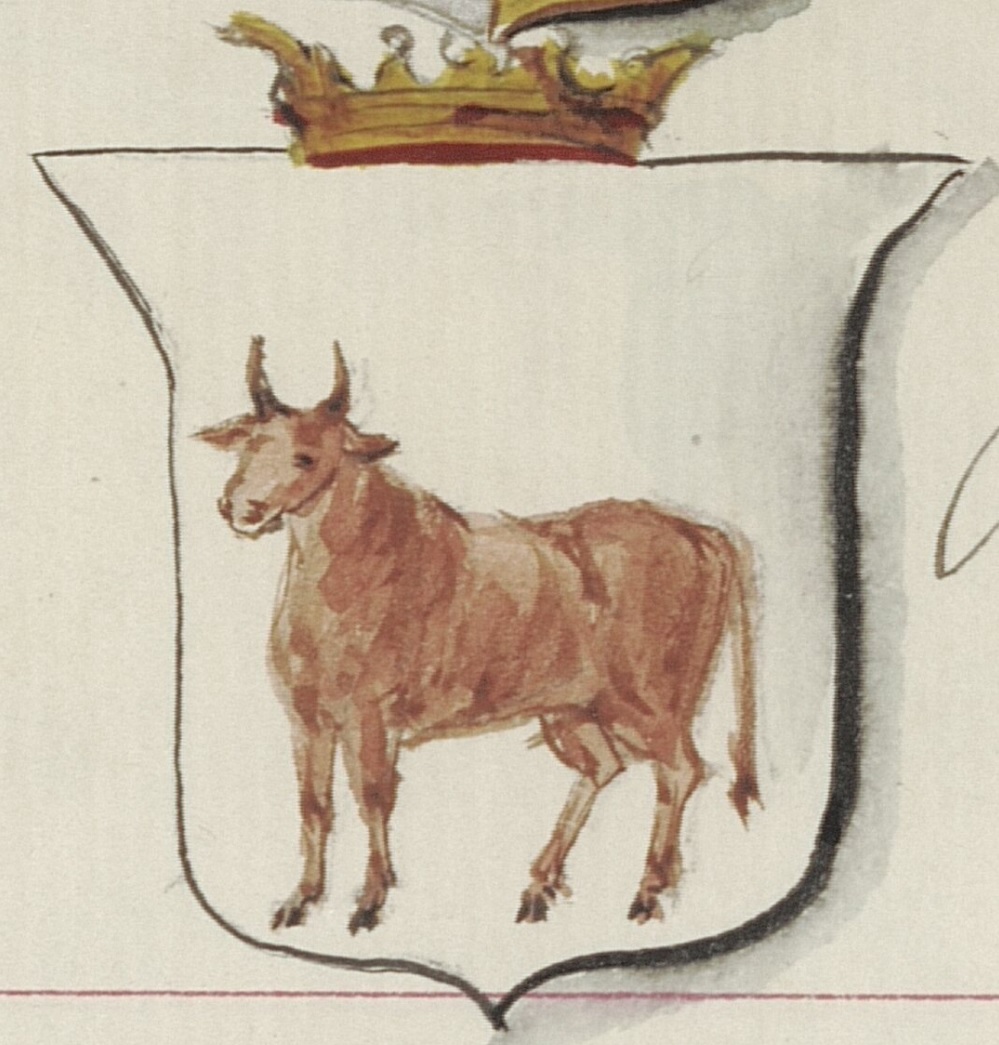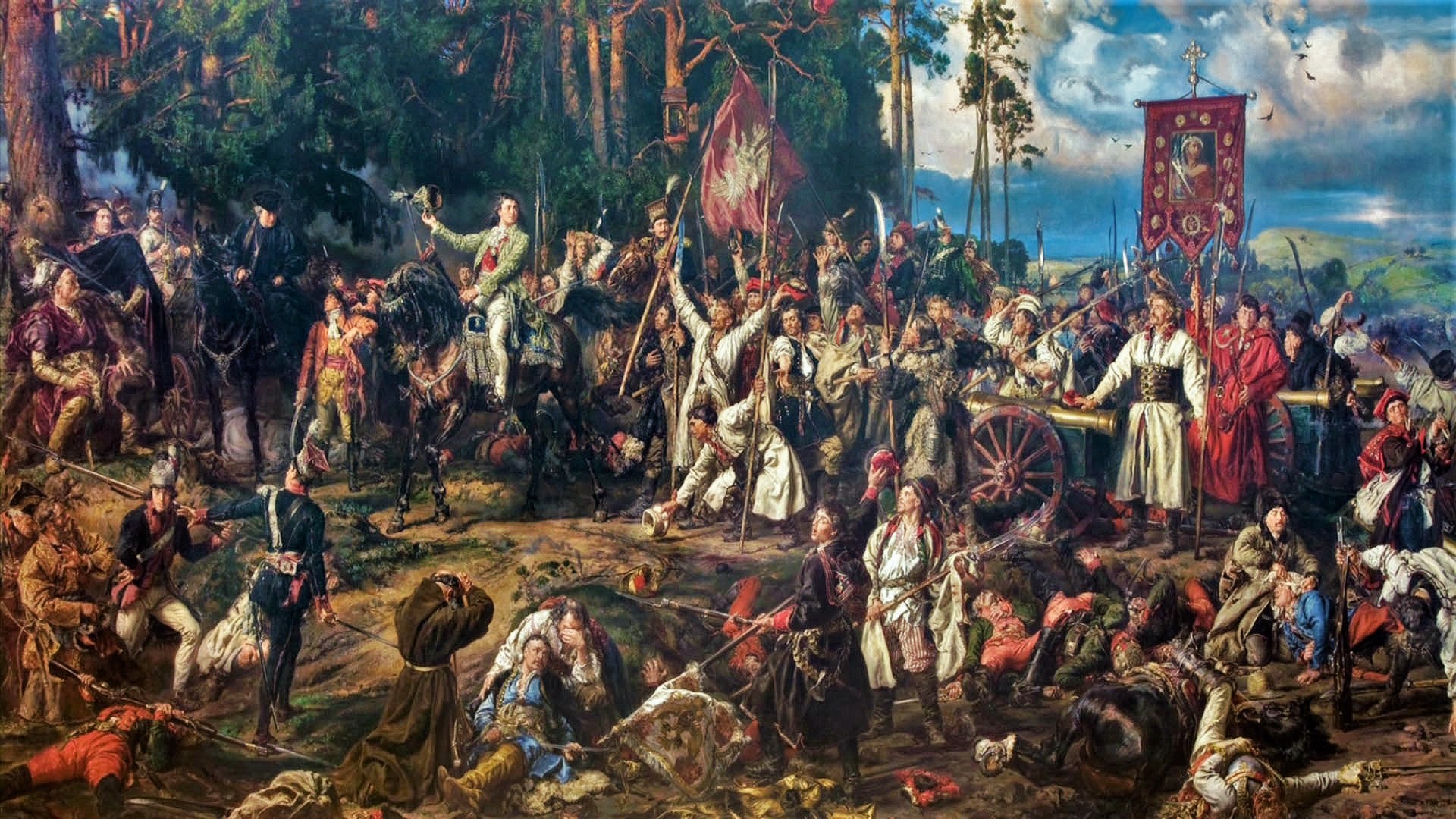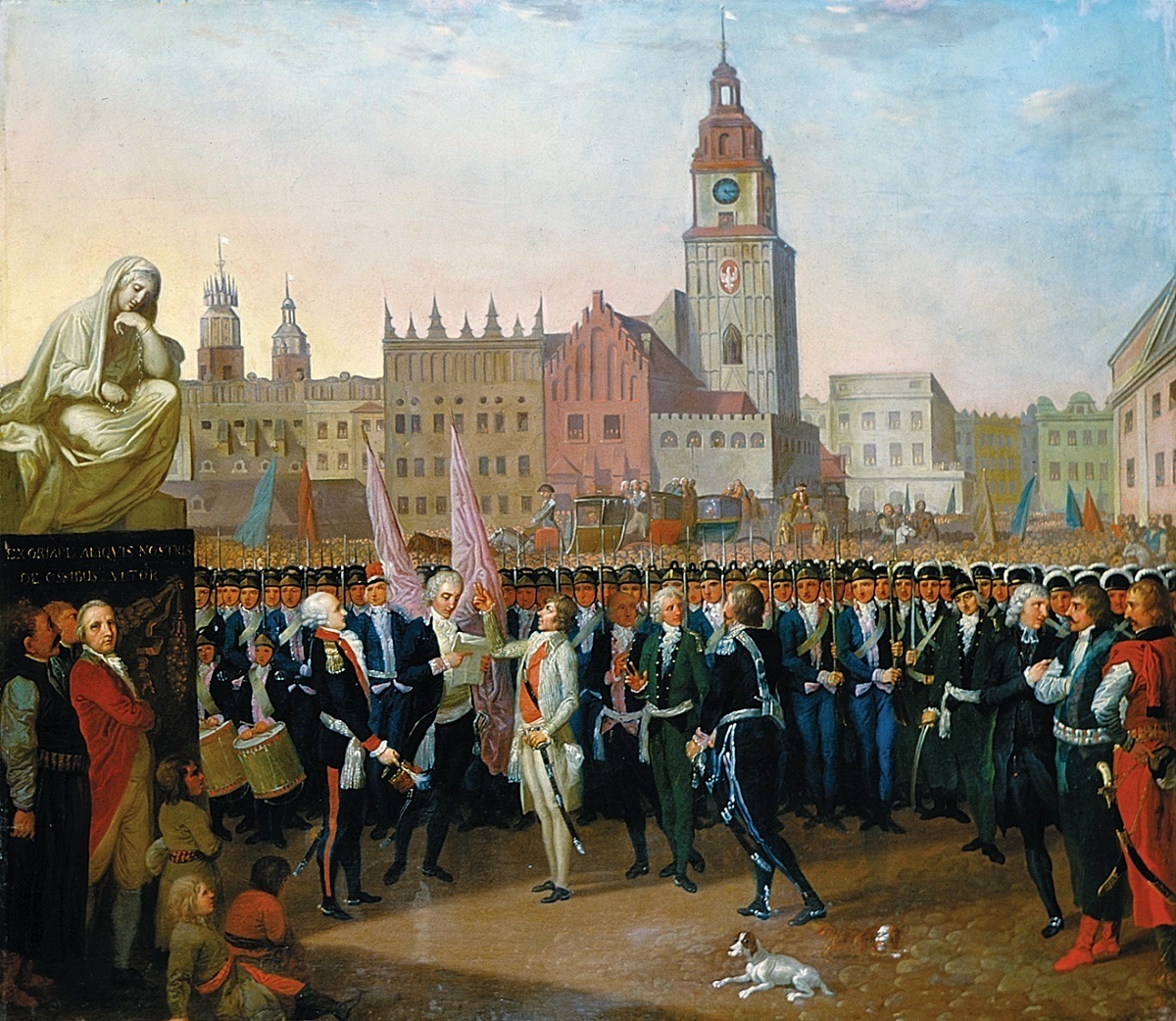|
Piotr Fergusson Tepper
Piotr Fergusson Tepper (1713–1794) was a Polish banker of German burgher origin,Wojciech Rogowski - ''Falenty Tepperów - z dziejów swobodnej bankowości ("free banking") w Polsce'' (Falenty of the Teppers - from the tradition of free banking in Poland) http://www.nbp.pl/konferencje/falenty2002/esej_pl.pdf merchant and industrial entrepreneur. Encyklopedia Polski (Encyclopedia of Poland), Wydawnictwo Ryszard Kluszczyński (publisher), Kraków 1996, Piotr Fergusson Tepper of Warsaw was the wealthiest banker in the second half of 18th century Poland. Tepper was the owner of a trading house and of landed estates in Mazovia and Volhynia. The principal lender of King Stanisław August Poniatowski and of the Treasury of the Polish–Lithuanian Commonwealth, in 1793 Tepper became bankrupt, along with several other Polish banks. Piotr Fergusson Tepper was fatally wounded during disturbances at the time of the Kościuszko Insurrection, after his trading and banking house at Miodowa S ... [...More Info...] [...Related Items...] OR: [Wikipedia] [Google] [Baidu] |
Stanisław August Poniatowski
Stanisław II August (born Stanisław Antoni Poniatowski; 17 January 1732 – 12 February 1798), known also by his regnal Latin name Stanislaus II Augustus, was King of Poland and Grand Duke of Lithuania from 1764 to 1795, and the last monarch of the Polish–Lithuanian Commonwealth. Born into wealthy Polish aristocracy, Poniatowski arrived as a diplomat at the Russian imperial court in Saint Petersburg in 1755 at the age of 22 and became intimately involved with the future empress Catherine the Great. With her connivance, he was elected King of Poland by the Polish Diet in September 1764 following the death of Augustus III. Contrary to expectations, Poniatowski attempted to reform and strengthen the large but ailing Commonwealth. His efforts were met with external opposition from neighbouring Prussia, Russia and Austria, all committed to keeping the Commonwealth weak. From within he was opposed by conservative interests, which saw the reforms as a threat to their traditiona ... [...More Info...] [...Related Items...] OR: [Wikipedia] [Google] [Baidu] |
1794 Deaths
Events January–March * January 1 – The Stibo Group is founded by Niels Lund as a printing company in Aarhus (Denmark). * January 13 – The U.S. Congress enacts a law providing for, effective May 1, 1795, a United States flag of 15 stars and 15 stripes, in recognition of the recent admission of Vermont and Kentucky as the 14th and 15th states. A subsequent act restores the number of stripes to 13, but provides for additional stars upon the admission of each additional state. * January 21 – King George III of Great Britain delivers the speech opening Parliament and recommends a continuation of Britain's war with France. * February 4 – French Revolution: The National Convention of the French First Republic abolishes slavery. * February 8 – Wreck of the Ten Sail on Grand Cayman. * February 11 – The first session of the United States Senate is open to the public. * March 4 – The Eleventh Amendment to the United States Co ... [...More Info...] [...Related Items...] OR: [Wikipedia] [Google] [Baidu] |
1713 Births
Events January–March * January 17 – Tuscarora War: Colonel James Moore leads the Carolina militia out of Albemarle County, North Carolina, in a second offensive against the Tuscarora. Heavy snows force the troops to take refuge in Fort Reading, on the Pamlico River. * February 1 – Skirmish at Bender, Moldova: Charles XII of Sweden is defeated by the Ottoman Empire. * February 4 – Tuscarora War: The Carolina militia under Colonel James Moore leaves Fort Reading, to continue the campaign against the Tuscarora. * February 25 – Frederick William I of Prussia begins his reign. * March 1 – Tuscarora War: Colonel James Moore's Carolina militia lays siege to the Tuscaroran stronghold of Fort Neoheroka, located a few miles up Contentnea Creek from Fort Hancock. * March 20 – Tuscarora War: Colonel James Moore's Carolina militia launches a major offensive against Fort Neoheroka. * March 23 – Tuscarora War: Fort Neoheroka falls t ... [...More Info...] [...Related Items...] OR: [Wikipedia] [Google] [Baidu] |
Polish Bankers
Polish may refer to: * Anything from or related to Poland, a country in Europe * Polish language * Poles, people from Poland or of Polish descent * Polish chicken * Polish brothers (Mark Polish and Michael Polish, born 1970), American twin screenwriters Polish may refer to: * Polishing, the process of creating a smooth and shiny surface by rubbing or chemical action ** French polishing, polishing wood to a high gloss finish * Nail polish * Shoe polish * Polish (screenwriting), improving a script in smaller ways than in a rewrite See also * * * Polonaise (other) A polonaise ()) is a stately dance of Polish origin or a piece of music for this dance. Polonaise may also refer to: * Polonaises (Chopin), compositions by Frédéric Chopin ** Polonaise in A-flat major, Op. 53 (french: Polonaise héroïque, ... {{Disambiguation, surname Language and nationality disambiguation pages ... [...More Info...] [...Related Items...] OR: [Wikipedia] [Google] [Baidu] |
Polish Reformed Church
The Polish Reformed Church, officially called the Evangelical Reformed Church in the Republic of Poland (Polish: ''Kościół Ewangelicko-Reformowany w RP'') is a historic Calvinistic Protestant church in Poland established in the 16th century, still in existence today. Structure and organisation According to Poland's Central Statistical Office, the Polish Reformed Church has 3,461 members (2015). The majority of church members live in central Poland; in 2014 out of a total number of 3464 adherents, 1800 lived in Łódź Voivodeship and 1000 in the city of Warsaw. There are eight congregations in Poland: * Warsaw * Łódź * Zelów * Bełchatów * Kleszczów * Żychlin * Strzelin * Pstrążna (part of the town of Kudowa Zdrój) Furthermore, emerging congregations exist in some other cities, including Poznań, Wrocław, and Gdańsk. In 2003, the Church ordained its first female minister and two more female students are in training. The Polish Reformed Church is a minority ch ... [...More Info...] [...Related Items...] OR: [Wikipedia] [Google] [Baidu] |
Powązki Cemetery
Powązki Cemetery (; pl, Cmentarz Powązkowski), also known as Stare Powązki ( en, Old Powązki), is a historic necropolis located in Wola district, in the western part of Warsaw, Poland. It is the most famous cemetery in the city and one of the oldest, having been established in 1790. It is the burial place of many illustrious individuals from Polish history. Some are interred along the "Avenue of the Distinguished" - ''Aleja Zasłużonych'', created in 1925. It is estimated that over 1 million people are buried at Powązki. The cemetery is often confused with the newer Powązki Military Cemetery, which is located to the north-west of Powązki Cemetery. History Powązki Cemetery was established on 4 November 1790 on land donated by nobleman Melchior Szymanowski, and consecrated on 20 May 1792. Initially it covered an area of only about 2.5 ha. In the same year Saint Karol Boromeusz Church, designed by Dominik Merlini, was built on the northern edge of the cemetery. Th ... [...More Info...] [...Related Items...] OR: [Wikipedia] [Google] [Baidu] |
Kościuszko Uprising
The Kościuszko Uprising, also known as the Polish Uprising of 1794 and the Second Polish War, was an uprising against the Russian Empire and the Kingdom of Prussia led by Tadeusz Kościuszko in the Polish–Lithuanian Commonwealth and the Prussian partition in 1794. It was a failed attempt to liberate the Polish–Lithuanian Commonwealth from external influence after the Second Partition of Poland (1793) and the creation of the Targowica Confederation. Background Decline of the Commonwealth By the early 18th century, the magnates of Poland and Lithuania controlled the state – or rather, they managed to ensure that no reforms would be carried out that might weaken their privileged status (the " Golden Freedoms"). Through the abuse of the '' liberum veto'' rule which enabled any deputy to paralyze the Sejm (Commonwealth's parliament) proceedings, deputies bribed by magnates or foreign powers or those simply content to believe they were living in an unprecedented "G ... [...More Info...] [...Related Items...] OR: [Wikipedia] [Google] [Baidu] |
Volhynia
Volhynia (also spelled Volynia) ( ; uk, Воли́нь, Volyn' pl, Wołyń, russian: Волы́нь, Volýnʹ, ), is a historic region in Central and Eastern Europe, between south-eastern Poland, south-western Belarus, and western Ukraine. The borders of the region are not clearly defined, but the territory that still carries the name is Volyn Oblast, in western Ukraine. Volhynia has changed hands numerous times throughout history and been divided among competing powers. For centuries it was part of the Polish-Lithuanian Commonwealth. After the Russian annexation, all of Volhynia was part of the Pale of Settlement designated by Imperial Russia on its south-western-most border. Important cities include Lutsk, Rivne, Volodymyr, Ostroh, Ustyluh, Iziaslav, Peresopnytsia, and Novohrad-Volynskyi (Zviahel). After the annexation of Volhynia by the Russian Empire as part of the Partitions of Poland, it also included the cities of Zhytomyr, Ovruch, Korosten. The city of Zviahe ... [...More Info...] [...Related Items...] OR: [Wikipedia] [Google] [Baidu] |
Polish–Lithuanian Commonwealth
The Polish–Lithuanian Commonwealth, formally known as the Kingdom of Poland and the Grand Duchy of Lithuania, and, after 1791, as the Commonwealth of Poland, was a bi- confederal state, sometimes called a federation, of Poland and Lithuania ruled by a common monarch in real union, who was both King of Poland and Grand Duke of Lithuania. It was one of the largest and most populous countries of 16th- to 17th-century Europe. At its largest territorial extent, in the early 17th century, the Commonwealth covered almost and as of 1618 sustained a multi-ethnic population of almost 12 million. Polish and Latin were the two co-official languages. The Commonwealth was established by the Union of Lublin in July 1569, but the Crown of the Kingdom of Poland and the Grand Duchy of Lithuania had been in a ''de facto'' personal union since 1386 with the marriage of the Polish queen Jadwiga (Hedwig) and Lithuania's Grand Duke Jogaila, who was crowned King '' jure uxoris'' Władys� ... [...More Info...] [...Related Items...] OR: [Wikipedia] [Google] [Baidu] |
Mazovia
Mazovia or Masovia ( pl, Mazowsze) is a historical region in mid-north-eastern Poland. It spans the North European Plain, roughly between Łódź and Białystok, with Warsaw being the unofficial capital and largest city. Throughout the centuries, Mazovia developed a separate sub-culture featuring diverse folk songs, architecture, dress and traditions different from those of other Poles. Historical Mazovia existed from the Middle Ages until the partitions of Poland and consisted of three voivodeships with the capitals in Warsaw, Płock and Rawa. The main city of the region was Płock, which was even capital of Poland from 1079 to 1138; however, in Early Modern Times Płock lost its importance to Warsaw, which became the capital of Poland. From 1138, Mazovia was governed by a separate branch of the Piast dynasty and when the last ruler of the independent Duchy of Mazovia died, it was fully incorporated to the Polish Crown in 1526. During the Polish–Lithuanian Commonwealt ... [...More Info...] [...Related Items...] OR: [Wikipedia] [Google] [Baidu] |
Warsaw
Warsaw ( pl, Warszawa, ), officially the Capital City of Warsaw,, abbreviation: ''m.st. Warszawa'' is the capital and largest city of Poland. The metropolis stands on the River Vistula in east-central Poland, and its population is officially estimated at 1.86 million residents within a greater metropolitan area of 3.1 million residents, which makes Warsaw the 7th most-populous city in the European Union. The city area measures and comprises 18 districts, while the metropolitan area covers . Warsaw is an Alpha global city, a major cultural, political and economic hub, and the country's seat of government. Warsaw traces its origins to a small fishing town in Masovia. The city rose to prominence in the late 16th century, when Sigismund III decided to move the Polish capital and his royal court from Kraków. Warsaw served as the de facto capital of the Polish–Lithuanian Commonwealth until 1795, and subsequently as the seat of Napoleon's Duchy of Warsaw. Th ... [...More Info...] [...Related Items...] OR: [Wikipedia] [Google] [Baidu] |



.jpg)


